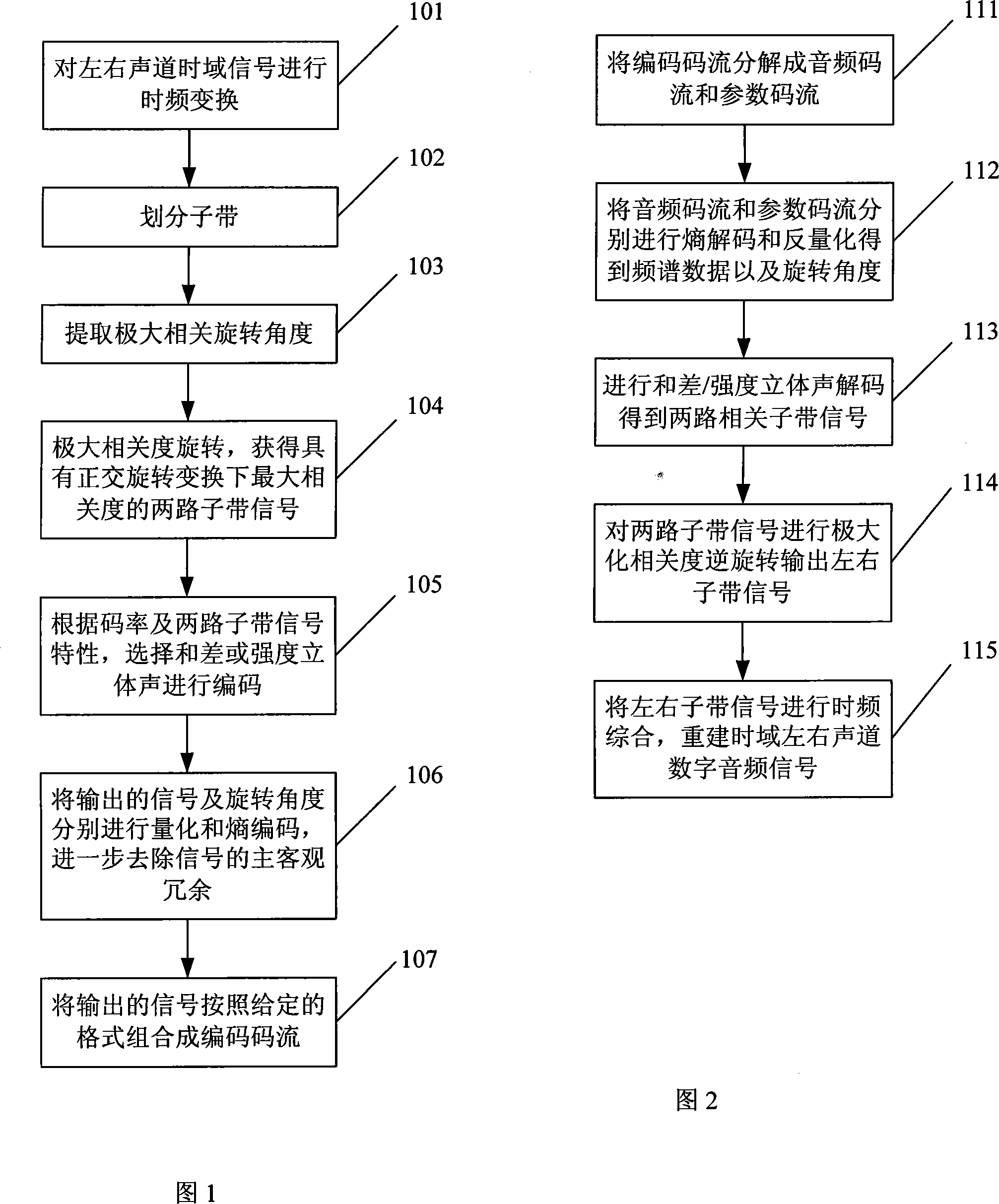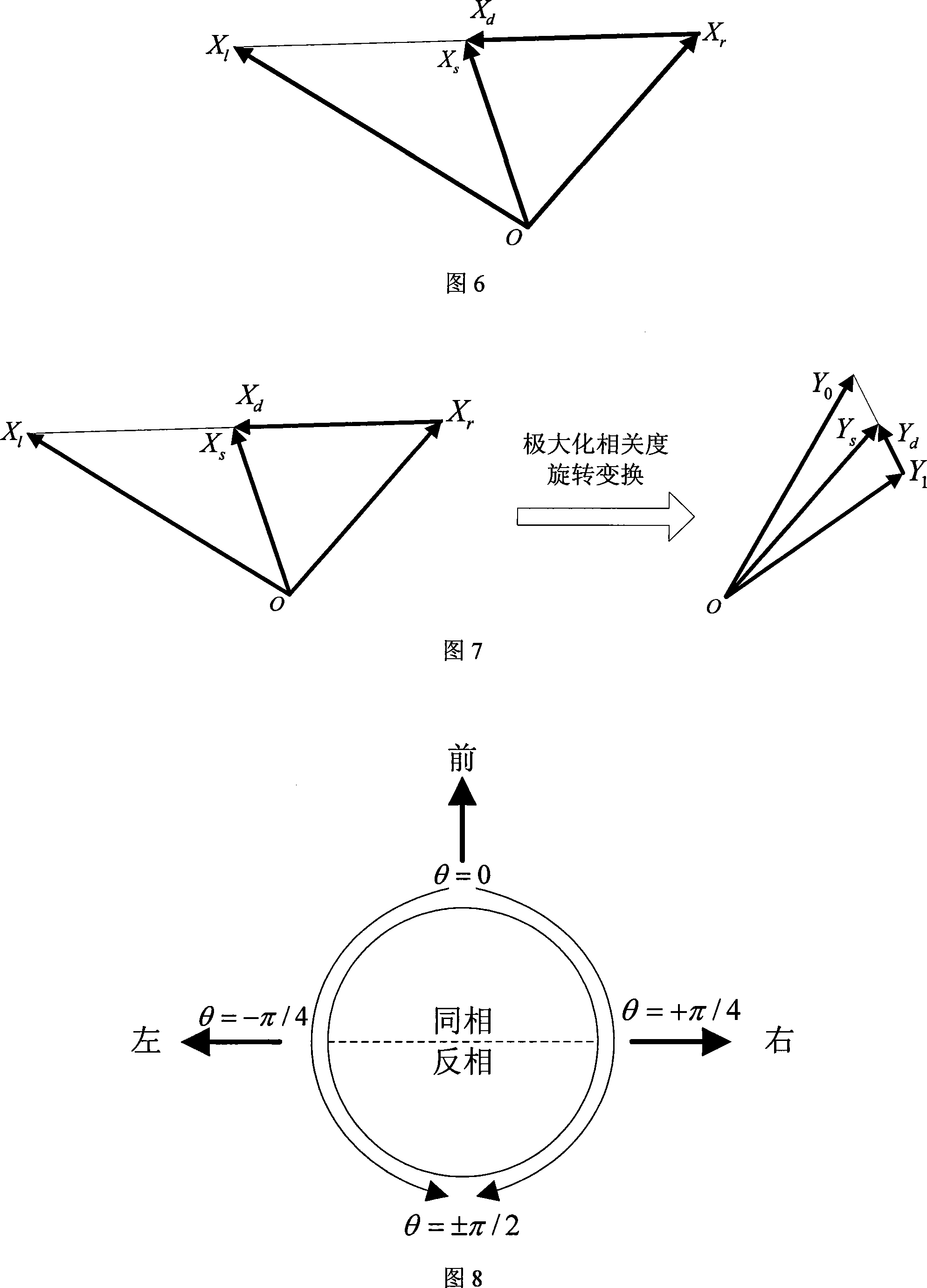Method and system for encoding and decoding audio signal
A technology of audio signal and coding method, which is applied in the direction of binaural system, stereo system, speech analysis, etc., and can solve the problem of sound quality loss and so on
- Summary
- Abstract
- Description
- Claims
- Application Information
AI Technical Summary
Problems solved by technology
Method used
Image
Examples
Embodiment 1
[0126] Referring to Fig. 1, the embodiment of the present invention provides a kind of coding method of audio signal, specifically comprises the following steps:
[0127] Step 101: Perform time-frequency conversion on the time-domain audio signals of the left and right channels;
[0128] The input is the time-domain audio signal of the left and right channels, and the output is the frequency-domain audio signal of the left and right channels. Here, FFT (FastFlourier Transform, Fast Fourier Transform), MDCT (Modified Discrete Cosine Transform, Modified Discrete Cosine Transform), or PQMF (Polyphase Quadrature Mirror Filterbank, polyphase filter bank) to achieve.
[0129] Step 102: dividing subbands;
[0130] The frequency-domain audio signals of the left and right channels are output as continuous non-overlapping sub-bands divided according to a certain bandwidth. The bandwidth of the sub-bands matches the human auditory characteristics. From low frequency to high frequency, t...
Embodiment 2
[0165] Referring to Fig. 2, an embodiment of the present invention provides a decoding method of an audio signal, which specifically includes the following steps:
[0166] Step 111: Decompose the coded code stream into an audio code stream and a parameter code stream.
[0167] Step 112: Perform entropy decoding and inverse quantization on the audio code stream and the parameter code stream respectively to obtain spectrum data and rotation angles.
[0168] Step 113: According to the stereo encoding mode, perform corresponding sum-difference or intensity stereo decoding to obtain two channels of related sub-band signals.
[0169] Step 114: Perform maximum correlation inverse rotation on the two channels of sub-band signals to output the left and right sub-band signals.
[0170] Step 115: Perform time-frequency synthesis on the left and right sub-band signals to reconstruct the digital audio signals of the left and right channels in the time domain.
[0171] In this embodiment, t...
Embodiment 3
[0174] Referring to FIG. 3 , an embodiment of the present invention provides an audio signal encoding system, including time-frequency analysis units 501 and 502, a maximum correlation rotation transformation unit 503, a sum difference or intensity stereo encoding unit 504, and a quantization entropy encoding unit 505 and 506, and a code stream shaping module unit 507.
[0175] Time-frequency analysis units 501 and 502 are used to perform time-frequency transformation on the signals of the left and right channels respectively, which can be FFT, MDCT, or polyphase filter bank;
[0176] The maximum correlation degree rotation transformation unit 503 is a core unit, through the transformation described in (3) formula, and the rotation angle is determined by (5) formula, to obtain the two-way sub-band signals with the maximum correlation degree under the orthogonal rotation transformation;
[0177] The sum difference or intensity stereo coding unit 504 selects the sum difference o...
PUM
 Login to View More
Login to View More Abstract
Description
Claims
Application Information
 Login to View More
Login to View More - R&D
- Intellectual Property
- Life Sciences
- Materials
- Tech Scout
- Unparalleled Data Quality
- Higher Quality Content
- 60% Fewer Hallucinations
Browse by: Latest US Patents, China's latest patents, Technical Efficacy Thesaurus, Application Domain, Technology Topic, Popular Technical Reports.
© 2025 PatSnap. All rights reserved.Legal|Privacy policy|Modern Slavery Act Transparency Statement|Sitemap|About US| Contact US: help@patsnap.com



